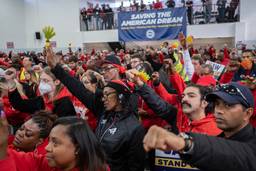In South Dakota, where union members in the private workforce are nearly a mirage, Republican lawmakers are thinking of bringing the same fate down upon government workers.
They are mulling a law that would bar local governments from negotiating collective bargaining agreements with unions, according to news reports.
So what’s the surprise, you say? Considering the gains the Republicans have reaped in state houses and in Washington, such strategies are not surprising at all.
All true, but this is no time for organized labor to turn up its collar and try to wait out the cold. There are other doings on the horizon that should make the nation’s public sector unions pray for a powerful campaign to lead it out of the mess.
As financially strapped states begin trimming away, expect to see more than minor cutbacks for state workers in Republican-led states. More seriously, some might copy the route taken several years ago by Gov. Mitch Daniels in Indiana, which dropped its bargaining with state employee unions.
Nowadays Daniels and Indiana’s Republicans, who have nailed down control over the state’s legislature, are talking about ways to place severe restraints on locally negotiated contracts with teacher unions.
New York is not South Dakota nor a Midwest state where once powerful unions can be shoved aside, but even newly elected Democratic Gov. Andrew Cuomo appears headed for a collision with the state’s public employee unions.
The Obama administration is highly unlikely to echo the complaints raised by some politicians that public workers are overpaid, underworked and beneficiaries of far too friendly contract negotiations.
But in its quest to pinch dollars, the administration will likely speed up the steady decline in the federal workforce, and as a result, the ranks of the federal worker unions. About 1.1 million federal employees were represented by a union in 2010, a nearly 2 percent decline in one year, according to the Washington Post.
This wearing away at public service workers and unions that represent them should set off alarms for organized labor, because this has been the one area where U.S. unions had been able to hold their own.
The reason that only 6.9 percent of the private workforce today belongs to a union while 36.2 percent holds a public sector job is very simply that government officials in those places friendly to unions simply didn’t attack the unions the way businesses traditionally have.
But that was yesterday. Today, you better watch your back if your check has a public seal on it.
A former labor writer for the Chicago Tribune, Stephen Franklin is a Pulitzer Prize finalist and an adjunct professor at the University of Illinois Urbana-Champaign School of Labor and Employment Relations.







